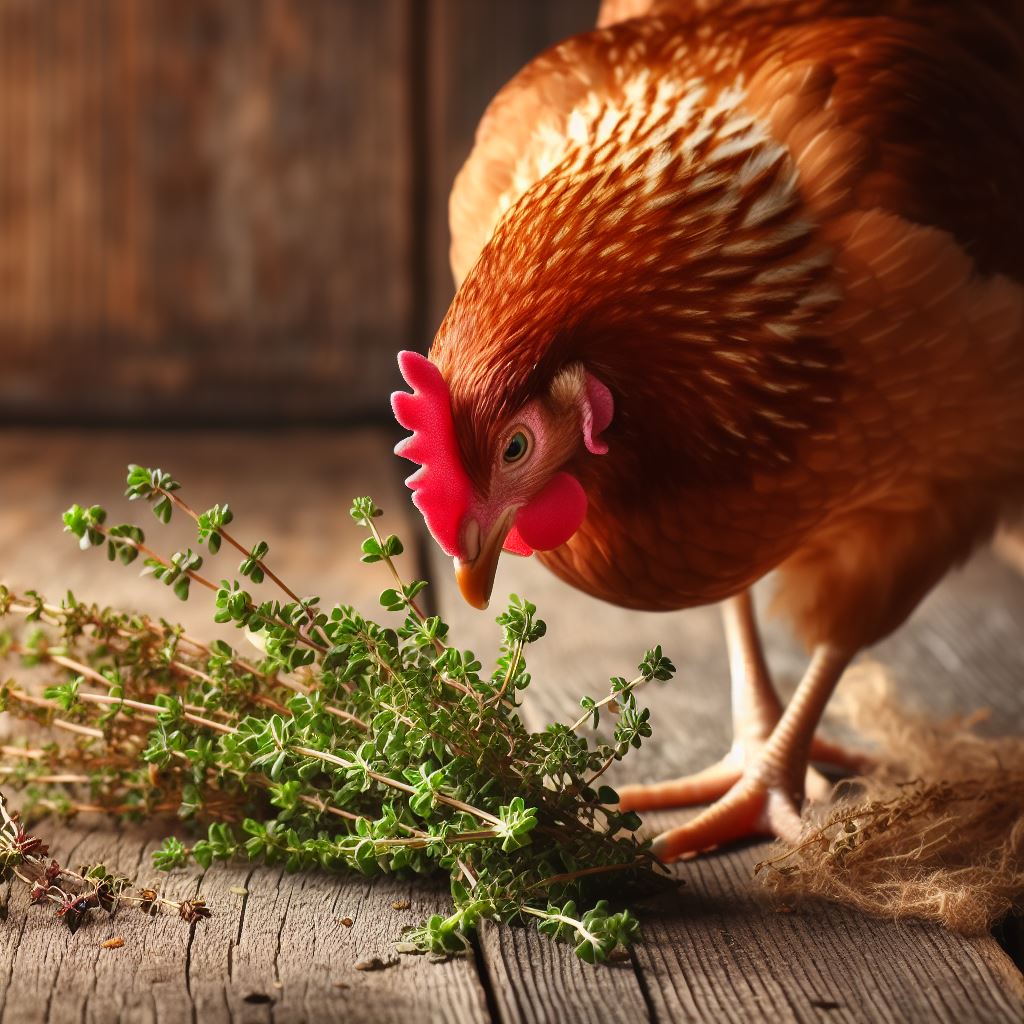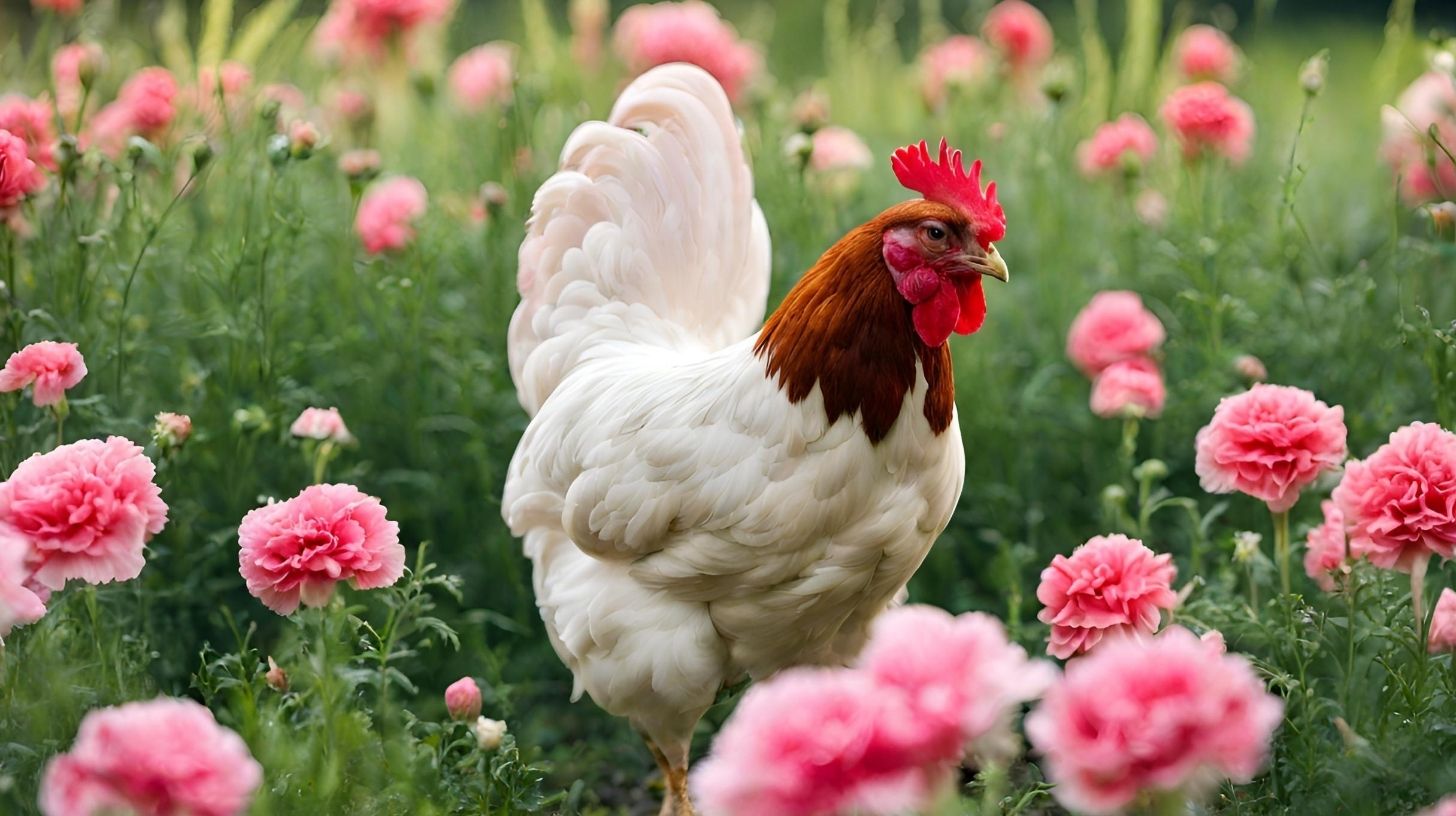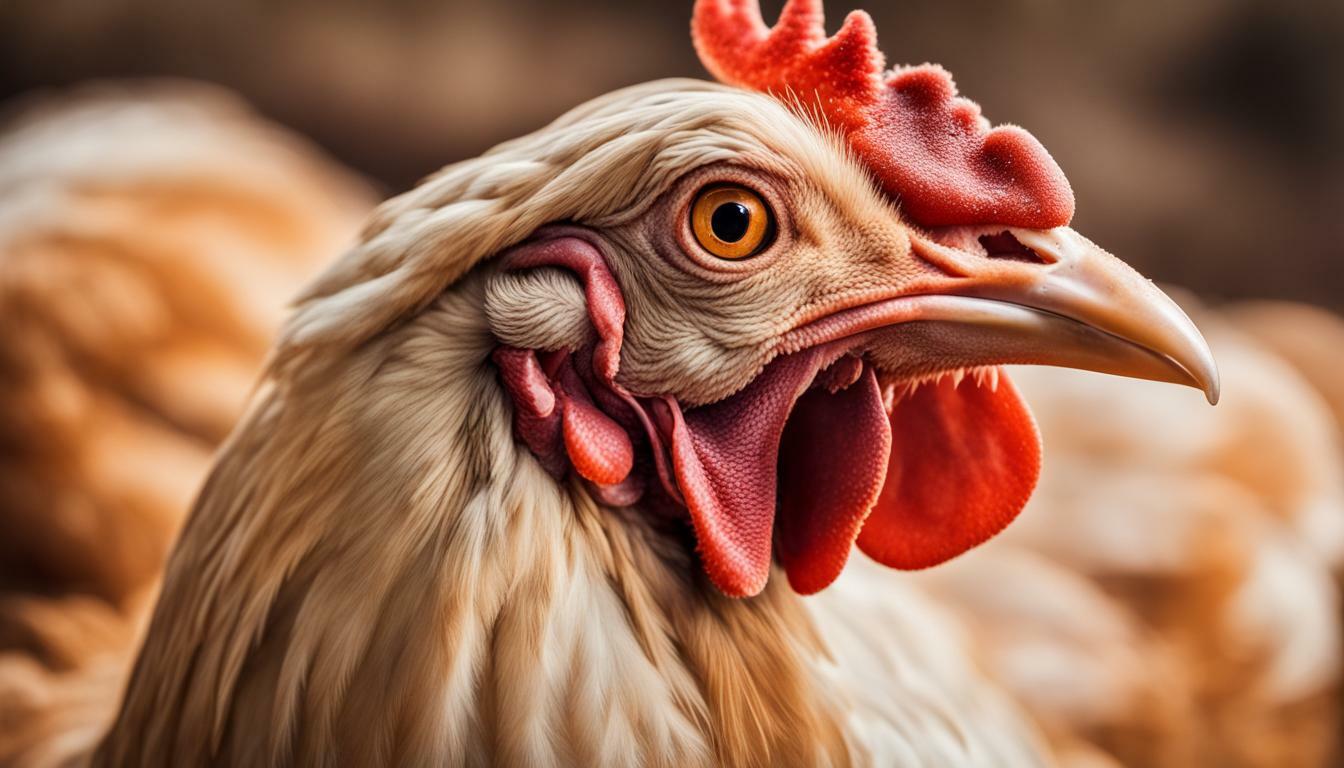Do Chickens Eat Timothy Hay? A Complete Guide

Table of content:
- Do Chickens Like Timothy Hay?
- What Types of Hay Do Chickens Eat?
- Is Timothy Hay Good for Chickens?
- Can Chickens Eat Timothy Hay Instead of Layer Pellets?
- How Much Timothy Hay Should Chickens Eat?
- Is Timothy Hay Safe for Baby Chicks?
- Do You Have to Chop Timothy Hay for Chickens?
- Do Chickens Prefer Alfalfa or Timothy Hay?
- Should You Feed Chickens Timothy Hay?
- Frequently Asked Questions
- Conclusion
Timothy hay is a common forage fed to livestock like horses and rabbits. But what about chickens – do chickens eat timothy hay? This comprehensive guide covers everything you need to know about feeding timothy hay to chickens.
Key Takeaways:
- Timothy hay provides fiber, protein, and nutrients chickens need
- Chickens can eat timothy hay pellets and chopped loose timothy hay
- Feed timothy hay free-choice or limit to 2-5% of daily diet
- Baby chicks can eat crushed timothy hay after 2 weeks old
- Timothy hay ideal forage for egg-laying hens
- Combine with other foods for balanced chicken diet
Timothy hay comes from a perennial grass called timothy planted primarily as a forage crop for cattle. While timothy originated as a native European grass, it grows well across North America today. Timothy hay has a high fiber and protein content relative to other common livestock forages like alfalfa.
Do Chickens Like Timothy Hay?
Chickens can develop a taste for timothy hay. The nutty, sweet flavor and soft texture attracts chickens once they try it. The high fiber content also makes it beneficial for chicken health.
Timothy hay provides:
- Fiber – promotes digestion and gut health
- Protein – for growth and egg production
- Vitamins and minerals – supports immune system and metabolism
The nutrients in timothy hay compliment chicken feed and layer rations. The fiber satisfies a chicken’s natural foraging instinct. This makes timothy hay an excellent supplemental feed for chickens.
What Types of Hay Do Chickens Eat?
Chickens can eat several different types of hay:
| Hay Type | Key Benefits |
|---|---|
| Timothy Hay | High fiber and protein |
| Orchard Grass Hay | High protein |
| Oat Hay | High protein and minerals |
| Bermuda Grass Hay | Moderate protein and minerals |
| Meadow Hay | Low protein, mostly fiber |
Timothy, orchard grass, and oat hay offer the biggest nutritional boost for chickens. Bermuda grass and meadow hays provide more bulk and roughage. Alfalfa hay tends to be too high in protein for most adult chickens. But smaller amounts of alfalfa can complement other grass hays.
Mixing two or three hay varieties creates a balanced forage blend for chickens. Timothy hay often makes the best hay base to mix with other hays.
 Is Timothy Hay Good for Chickens?
Is Timothy Hay Good for Chickens?
Yes, timothy hay provides an excellent source of fiber and protein for chickens. The moderate protein level around 10-14% makes it suitable for chickens at all life stages.
Here are some of the benefits of timothy hay for chickens:
- High in Fiber – The long strands and high fiber content aid digestion. Timothy hay may help minimize pecking by satisfying foraging needs.
- Provides Protein – The protein in timothy hay complements layer feed. The protein boost supports growth in chicks and egg production in hens.
- Rich in Vitamins and Minerals – Timothy hay contains calcium, phosphorus, potassium, and carotenoids. This helps meet the vitamin and mineral needs of chickens.
- Supports Gut Health – The high fiber content creates a healthy intestinal environment. Hay may discourage harmful bacteria growth.
- Improves Foraging Skills – Chickens get mental stimulation from pecking through hay. This satisfies natural foraging instincts.
- Low in Calories – The high fiber and low calorie content of timothy hay helps chickens feel full. This can prevent obesity.
The nutritious composition and health benefits make timothy hay a great addition to any chicken’s diet.
Can Chickens Eat Timothy Hay Instead of Layer Pellets?
Timothy hay should not completely replace a complete layer feed. While nutritious, timothy hay does not provide the full balance of nutrients chickens need.
Chickens rely on layer feed for:
- Essential amino acids
- Important fatty acids like omega-3s
- Key minerals like calcium and phosphorus
Layer pellets conveniently package a formulated blend of proteins, grains, vitamins, and minerals chickens need for optimal health and egg production.
However, timothy hay can supplement layer rations. 2-5% of the daily diet as timothy hay gives chickens added foraging enrichment. It provides supplemental fiber, protein, and nutrients as well.
Free-choice timothy hay (available continuously) is another feeding option. This allows chickens to self-regulate their hay intake. But limit free-choice hay to certain times to encourage eating the complete feed.
 How Much Timothy Hay Should Chickens Eat?
How Much Timothy Hay Should Chickens Eat?
Chickens can eat up to 5% of their daily diet as timothy hay. Here are guidelines for how much timothy hay to feed chickens:
- Chicks under 4 weeks – Free-choice finely chopped timothy hay
- Chicks over 4 weeks – 1-2 ounces (28-57g) per chick daily
- Adult chickens – 1/4 – 1/2 pound (113-227g) per bird daily
- Free-choice – Allow access 1-2 times per day
The amount of timothy hay depends on the age and size of your chickens. Monitor body condition and adjust hay intake if chickens become too thin or fat.
Hay should supplement, not replace, complete feed. Start with small amounts of hay at first to gauge your flock’s interest. Gradually increase timothy hay if chickens readily consume it.
Timothy Hay Feeding Tips
- Chop or crush timothy hay for baby chicks
- Soak hay pellets to prevent choking
- Offer hay at set times to encourage eating layer feed
- Ensure adequate bunk space so all chickens can access
- Store hay properly to prevent mold or spoilage
Using these tips will help your flock enjoy timothy hay as a healthy treat and forage source!
Is Timothy Hay Safe for Baby Chicks?
Yes, timothy hay is safe for chicks over 2 weeks old. The soft, flexible stems allow young chicks to easily chew and digest the hay.
Starting chicks on timothy hay has several benefits:
- Provides extra nutrition from fiber, protein, and nutrients
- Aids crop and digestive system development
- Encourages natural foraging behaviors
- Provides mental enrichment and stimulation
Special preparation is needed for baby chicks under 4 weeks old:
Weeks 1-2 – No hay, focus on starter feed. Chicks have limited ability to digest fiber.
Weeks 3-4 – Feed finely chopped or crushed timothy hay. Limit to 1-2 ounces per chick daily.
Over 4 weeks – Hay can be fed chopped, crushed, or in loose handfuls. Expand intake up to 1/4 pound per bird daily.
Always provide chick starter or grower feed free choice as the primary diet. Check that chicks are eating and growing well when introducing hay.
With proper introduction, timothy hay is an excellent supplement to support chick health.
Do You Have to Chop Timothy Hay for Chickens?
For adult chickens, timothy hay does not need chopping. Whole timothy hay strands are fine for chickens over 12 weeks old.
But for younger chicks, chopping makes timothy hay safer and easier to eat. Using scissors or hand-crushing, chop hay into 1 inch or smaller pieces.
Another option is to feed hay pellets or cubes. These are compressed timothy hay shaped into smaller bits. Soak pellets briefly to soften and prevent choking.
Chopped or pelleted hay prevents long strands from causing crop impactions in delicate young chick digestive systems.
Once chicks are 12 weeks and older, their digestion strengthens. At this point, they can safely eat whole, unchopped timothy hay.
Do Chickens Prefer Alfalfa or Timothy Hay?
Chickens may initially show more interest in alfalfa hay. Alfalfa tends to be greener, leafier, and more aromatic. This strong scent and appearance attracts chickens.
However, timothy hay offers more advantages:
- Lower protein better suits adult chicken needs
- Provides more stem fiber important for digestion
- Higher calcium to phosphorus ratio beneficial for hens
A blend of alfalfa and timothy makes a good compromise. Alfalfa excites chickens, while timothy provides balanced nutrition.
Try a mix of 75% timothy hay and 25% alfalfa hay. This gives chickens the best nutrition and entices them to eat the hay.
Over time, chickens associate the taste of timothy with feeling full and satisfied. A timothy hay habit develops when fed daily.
Should You Feed Chickens Timothy Hay?
Here’s a summary of the benefits of feeding timothy hay to chickens:
- Provides nutrients like protein, vitamins, and minerals
- Important fiber supports digestion and gut health
- Aids crop and digestive system development in chicks
- Encourages natural pecking and foraging behaviors
- Provides mental enrichment and stimulation
- Supports body condition and helps prevent obesity
- Complementary nutrition to complete chicken feeds
The moderate protein, high fiber, and nutrients in timothy hay make it an excellent addition to any backyard or commercial chicken diet.
Follow the recommended amounts for different age groups. Timothy hay optimizes nutrition in chicks and hens, while satisfying innate foraging needs. Consulting with an avian nutritionist or veterinarian can help determine the ideal diet for your flock.
With proper feeding, timothy hay offers a winning nutritional supplement for chickens!
Frequently Asked Questions
Is timothy hay a complete feed for chickens?
No, timothy hay is not a complete chicken feed by itself. It lacks some key nutrients, so should be fed along with a balanced commercial feed or ration.
Can I feed timothy hay free choice to chickens?
You can offer timothy hay free choice, but it’s best to limit access to certain times of day. This encourages chickens to eat their complete feed and prevents filling up only on hay.
Is timothy hay a natural food for chickens in the wild?
As an agricultural grass crop, timothy hay is not a natural wild food. But it provides a similar nutritional profile to the grasses and plants chickens forage for in nature.
How do I introduce timothy hay to chickens?
Start by offering small amounts of chopped hay. Place it in a feeder right next to their normal feed so they start to associate the smell and taste with their regular diet.
Can too much timothy hay be bad for chickens?
Feeding excessive amounts can lead to an imbalanced diet. Limit timothy hay to 5% of the total daily diet for optimal nutrition. Monitor chicken health and adjust amounts accordingly.
Conclusion
Timothy hay can be an excellent addition to the diet of backyard and commercial flocks. The high fiber supports digestion, while the protein and nutrients provide well-rounded nutrition. Feed chopped timothy hay starting at 2-3 weeks old to supplement standard starter and grower feeds.
Adult chickens can consume up to 5% of their diet as timothy hay. The hay complements complete layer feeds. Egg-laying hens benefit from the extra protein, calcium, and phosphorus. Timothy hay also satisfies chicken’s natural urge to forage and peck.
Follow the feeding recommendations for different age groups. Store hay properly to prevent mold or spoilage. With proper integration into the diet, timothy hay promotes good health and keeps chickens happily pecking!
Welcome. I’m Adreena Shanum, the proud owner of this website, and I am incredibly passionate about animals, especially poultry. I founded adreenapets.com as a labor of love, stemming from my desire to share my knowledge and experiences with poultry enthusiasts worldwide.




